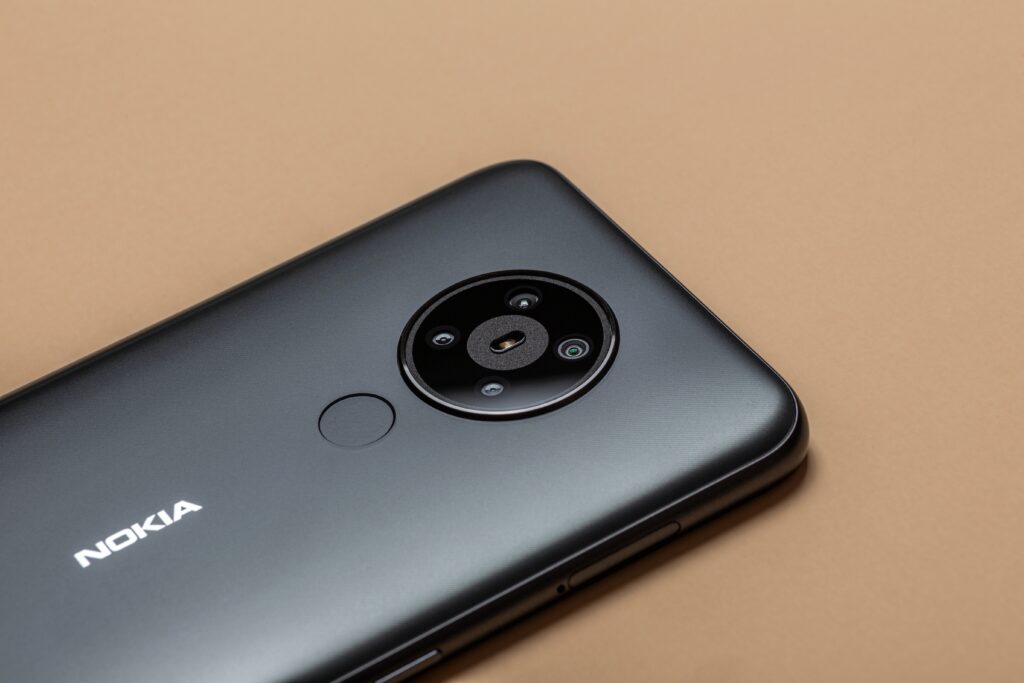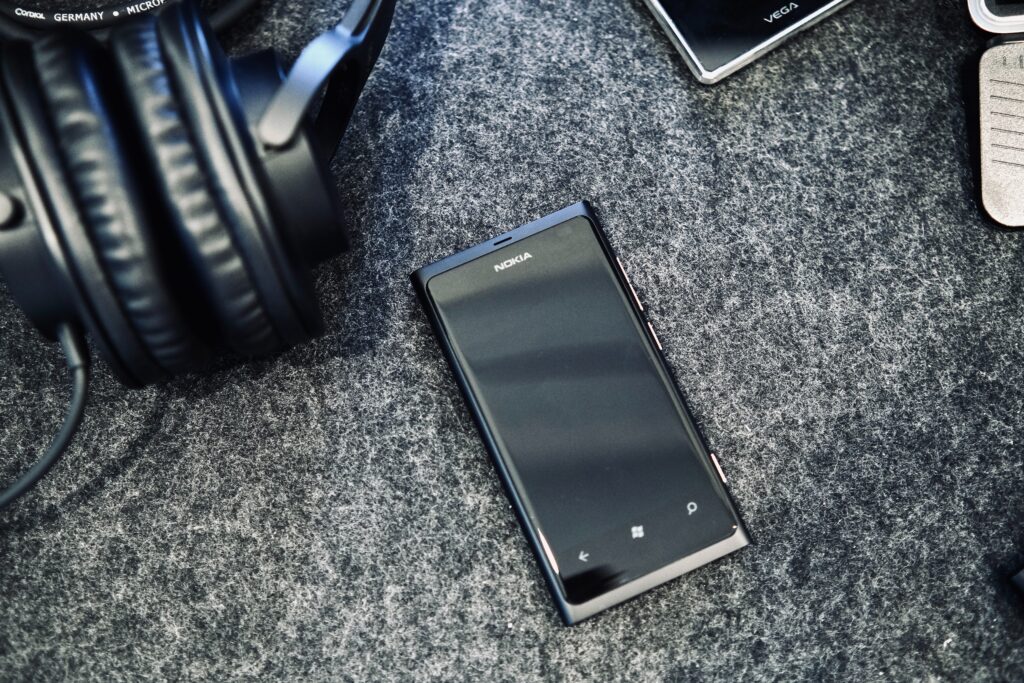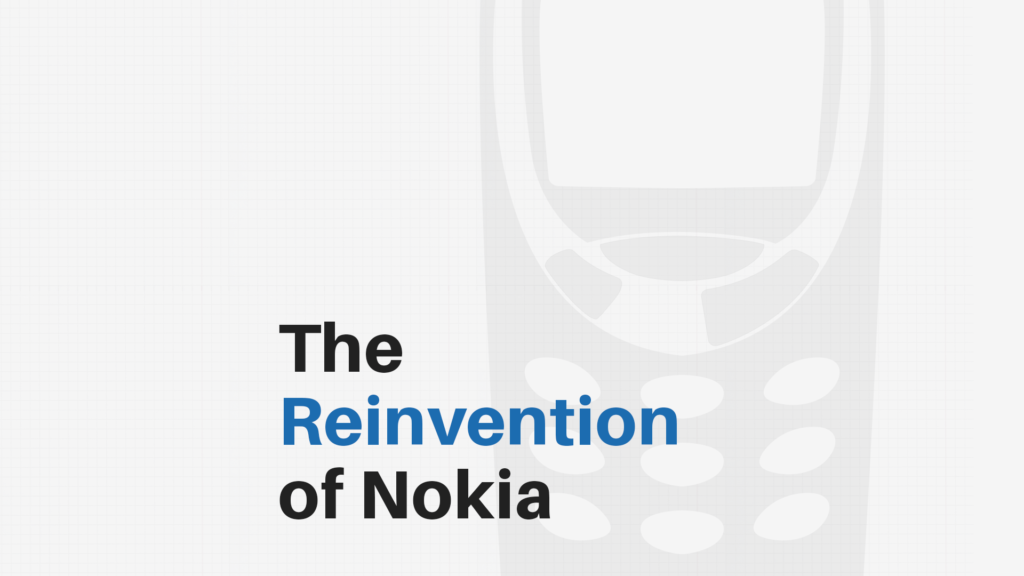Nokia was once the king of mobile devices – holding the title of best-selling cellphone brand for 14 years in the late 1990s to the early 2000s.
It has made numerous iconic phones including the 1999 Nokia 3210, one of the first phones with the popular snake game, and its successor the 2000 Nokia 3310 – dubbed today as the durable “brick phone.”
But something went wrong along the way, paving the way for the dominance of Apple and Samsung in today’s cellphone market. Despite numerous setbacks, including pulling out of the cellphone market altogether, Nokia has been incredibly innovative and has even made itself a leader in a completely new industry.
Nokia Started In A Completely Different Industry

The three companies that eventually merged into the Nokia Corporation originally operated in completely different industries than the mobile phones we know Nokia for today.
One of the three predecessors was a pulp mill established in 1865 near Tampere, Finland – producing fiber boards that would later be manufactured into paper. A few years later, the company set up another pulp mill in the nearby town of Nokia, Finland, where it got its name.
Another predecessor was a rubber business that produced car tires and rubber shoes that also used the same Nokia name. The third predecessor was a Finnish company involved in telephone and telegraph communications.
The three main predecessor companies merged and formed the modern-day Nokia Corporation in 1967. The corporation produced a variety of products including televisions, nuclear powerplant equipment, computers, and more.
In 1987, it entered the cellphone business as it launched one of the first handheld mobile phones in the world, the Nokia-Mobira Cityman. It weighed 800 grams, a significant drop in weight from the 5-kilogram mobile phones that were available at the time.
The 1990s was a pivotal time for the company as it made the decision to solely focus on its telecommunications business – selling off its other business units over the decade. This shift in focus eventually paid off for Nokia as it cemented itself as one of the most successful cellphone brands in the late 1990s and early 2000s.
Nokia’s Great Success As A Market Leader Then Great Failure 14-Years Later

Its innovative approach to cellphones drove Nokia’s success. The company was able to identify market demand for cheaper cellphones. At a time when cellphones were commonly priced at more than $1000, the 1997 Nokia 6610 cost $900 or $200 when purchased with a cell service contract.
By 1998, Nokia was selling over 41 million cellphones annually, overtaking Motorola as the best-selling cellphone brand.
And as of 2023, it made 4 of the top 10 best-selling phones of all time. The number one best-selling phone of all time is the Nokia 1110 and the related 1100 model, of which Nokia collectively sold nearly 500 million units.
Statista data reveals that the company’s net sales grew exponentially during the height of its popularity in the 1990s and early 2000s. From 19.77 billion euros in 1999, Nokia’s net sales more than doubled to 51.06 billion euros in 2007.
Nokia’s Downfall

But Nokia’s affordable and durable cellphones eventually spelled the downfall of the Finnish cellphone giant.
Despite its success in the 2000s, competitors like Apple and Samsung began to outmaneuver and out-innovate Nokia at their own mobile phone game. Competitors began making a dent in Nokia’s net sales in 2008, as they released more innovative and desirable smartphone options such as the Apple iPhone and the Samsung Galaxy.
Nokia’s net sales went on a more-or-less steady decline until it hit a low of 12.71 billion euros in 2013. It sold its mobile devices division to Microsoft in 2013 after years of abysmal sales.
Multiple factors led to the failure of its mobile phone business including a slow adoption of smartphone trends, focus on affordable ‘dumbphones,’ and possible complacency as the longtime market leader.
For example, it failed to recognize the rising importance of software for consumers and it also failed to adapt to this change. Apple correctly recognized this trend when it introduced its iPhone in 2007 and pioneered downloadable apps in the late 2000s – a time when Nokia was still deadset on improving its phones’ hardware.
A Nokia executive commented that the company failed to adapt to the smartphone revolution – a trend the company saw as early as 2006. Samsung overtook Nokia as the world’s biggest mobile phone manufacturer in 2012. The Finnish phone manufacturer held this title for 14 years.
Nokia also stuck with its Symbian operating system for years even though many of its competitors, save for Apple, started adopting the now-popular Android operating system. Over 80% of smartphones sold in 2021 used the Android OS.
This story goes to show that no matter your leading position in your industry, you’re not immune to failure and disruption. However, Nokia’s story doesn’t end here.
Nokia’s Come Back

After selling its mobile devices division, Nokia’s net sales never recovered to their highs in the late 2000s.
One of the most important lessons any business has to learn is that its core business today may not be its core business tomorrow. The problem is identifying what’s coming next.
Through strategic foresight, Nokia explored opportunities to innovate and new avenues of growth. The Finnish tech giant envisioned a hyperconnected future that uses advanced telecommunication networks powered by 5G-advanced and 6G. Nokia believes these networks will be widely used for a variety of purposes that augment the work we do every day.
Thus, Nokia successfully innovated its business model and pivoted its business into the networking services and telecommunications industry. From B2C, they became B2B in the years after they sold their mobile devices business.
It is important to note that it is not new in the telecommunications industry. In fact, Nokia has deep industry experience in electronics, networking, and telecommunications.
Some of Nokia’s modern-day subsidiaries, like Nokia Bell Labs, were influential in the early development of telecommunications, networking, and electronics. The research of these subsidiaries powered the development of the first telephones, electrical sound recording, televisions, solar panels, lasers, and more.
Today, Nokia’s main business revolves around network and internet solutions – ranging from the Internet of Things to data centers to mobile networks. They provide the hardware, software, and support that enable these systems and infrastructures to function for businesses and countries around the world.
What’s your company’s next core business?
Nokia isn’t alone in the predicament it faced – your business model or products could easily expire overnight. Numerous other companies like Hapee Toothpaste, Samsung, and Kering also had to quickly shift their core business into a completely new product or even industry.
This is why it is important to look toward the future and into new avenues of growth for your business. One way to do this is through venture building.
Embiggen Digital Ventures is the Embiggen Group’s venture building arm. It co-creates new ventures with corporations worldwide, backed by our team of innovation experts and venture capital leaders.
Typically, newly built ventures create new revenue streams for an organization while operating independently of the core business. These ventures also allow corporations to access untapped markets, cater to consumers’ unsolved problems, and diversify their offerings.
Learn more about the work Embiggen does here.

